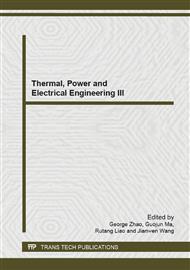p.18
p.22
p.27
p.32
p.39
p.43
p.47
p.52
p.57
Optimum Design of Flexible Microwave Absorption Fabrics
Abstract:
In order to develop flexible absorption fabric and study the effects of specifications on absorption properties, two-layer laminated fabrics were designed according to thickness matching and impedance matching. Stainless steel core-spun yarn fabrics were used as first layer which easily realized matching to the free space, Ni-Fe fiber consisted of second layer because its strong dielectric loss and magnetic loss. The reflectivity of fabrics were measured by the means of "arch testing method" in the range from 2~18 GHz. The results showed that the reflectivities of laminated fabrics can below-20 dB and the bandwidth <-10dB can reach 3.88 GHz with the change of fabric specifications.
Info:
Periodical:
Pages:
39-42
Citation:
Online since:
June 2014
Authors:
Price:
Сopyright:
© 2014 Trans Tech Publications Ltd. All Rights Reserved
Share:
Citation:


